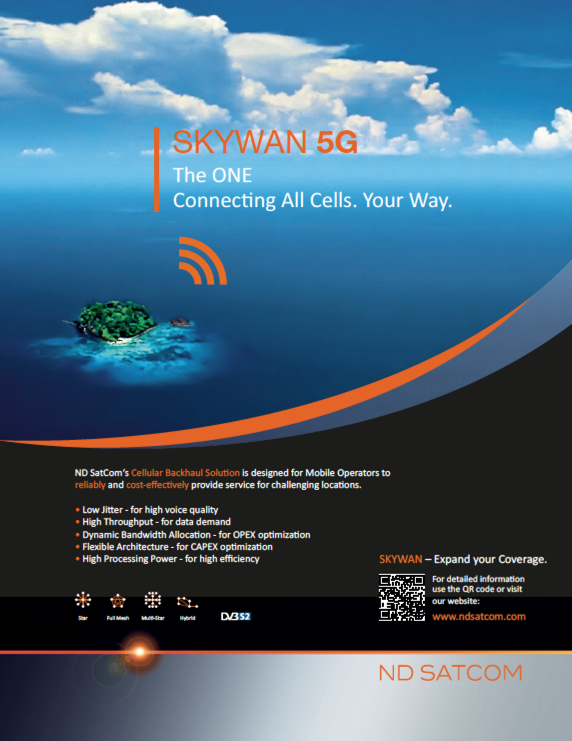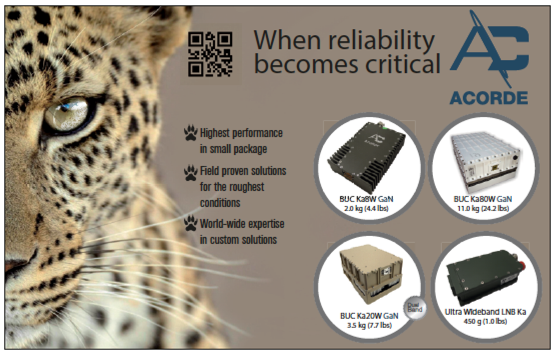Why did Telenor decide to recently host the IRG Workshop at your HQ?

Evenstad: Telenor Satellite decided to host an IRG Workshop in early May as a part of the company’s mission to provide our customers with high satellite link availability. The workshops continue to be important arenas wherein insight is acquired into technical solutions that are the most resistant to noise from interference sources. Plus, if interference is experienced in daily operations, what can defeat this occurrence. As satellite operators, we all need to face the reality of interference as a phenomenon and be proactive vis-à-vis our customers to take the necessary steps to avoid it.
How big of a problem is satellite interference for Telenor?
Evenstad: Satellite interference (RFI) is normally not a problem for the DTH transponders that operate in the planned frequency bands. However, for transponders in the unplanned frequency bands that are used for data communications, and with many customers transmitting to and receiving from our satellite fleet at land and sea locations throughout Europe and in the Middle East, interference incidents do occur from time to time.
What processes and technologies do you currently have in place to tackle interference?
Evenstad: Customer satisfaction is Telenor Satellite’s target number one in our daily operations. We have dedicated intense efforts in educating our staff to handle interference problems and to follow up such incidents in close cooperation with our customers. It is crucial that staff handling the transmitting Earth stations are well educated in order for them to perform accurate line-ups by pointing the antenna toward the target satellite, adjust the polarization angle of the signal, adjust the power level, etc.
We have established an automatic monitoring RF system which is tracking power level and frequency stability on our 1 West satellite fleet and on external capacity at other orbital locations. The results are available as spectrum plots that help to identify the time of the event occurrence, the RFI type, determining relatives, and so on.
Moreover, independent Rx DTH monitoring sites are located in Europa to measure the signal as seen by our customers. This means that we are able to go back in time to control the status and quality of our satellite links.
We also engage in transmit monitoring of the main uplinks to maintain strict control and regimen for satellite interference mitigation. We utilize geolocation technology to help locate an interference source if we are unable to solve that problem using other means. We also employ coordination and capacity management tools to avoid interference from other satellites, services and carriers.
How does IRG help support your efforts in reducing satellite interference?
Evenstad: IRG is important as this organization has brought additional attention to interference as an increasing problem among users and operators within the satellite community, and especially in focusing on how interference can be practically solved by motivating equipment suppliers to take steps to implement features into their products that could help us locate interference sources.
As the use of the geostationary arc is becoming more intense, the orbital separation between neighboring satellites decrease at the same time as the number of ground terminals increases, which significantly resulting in an increased number of interference incidents.
A common understanding of the impact of RFI is, therefore, vital. IRG has established an arena for bringing industry and operators together to learn about new technologies and products and to discuss the operational impacts of these upon this problem. The result is that, in the long run, we can all fight interference in a more intelligent and efficient manner.
What is the biggest cause of interference for Telenor?
Evenstad: The biggest cause of interference we experience are power levels that exceed nominal levels, malfunctioning equipment, RFI caused by human error, mis-pointed antennas, intentionally induced interference and piracy.
What other initiatives would you like to see the IRG work on?
Evenstad: We would like to see IRG continue to motivate the industry, the authorities and the operators to all work together so the industry may benefit from the enhancements resultant of new technologies that could fight interference.
By encouraging the actors in the community to continue to cooperate, we can achieve the best solutions for all. Moreover, operators, users and others should have access to an “education arena” (a web site) where interference scenarios around the globe are illustrated and described and where explanations are offered as to how those particular incidents were solved.
What additional topics were discussed at the Telenor sponsored IRG Workshop?
Evenstad: The use of geolocation is a quick and absolutely crucial method to find the source of interference. There are many existing sites around the world that already have the equipment for geolocation installed in their locations. Although we are competing operators, all can benefit from the cooperation to assist in “finding the source” using existing equipment—that’s the ultimate goal.
If Telenor Satellite can help in assisting another satellite operator with a particular interference incident, Telenor Satellite may well be aided by this same operator when another incident occurs. This is a win-win situation. Other issues to tackle include how to efficiently detect interference from moving sources, such as radio, vessels, cars, planes, and so on.



